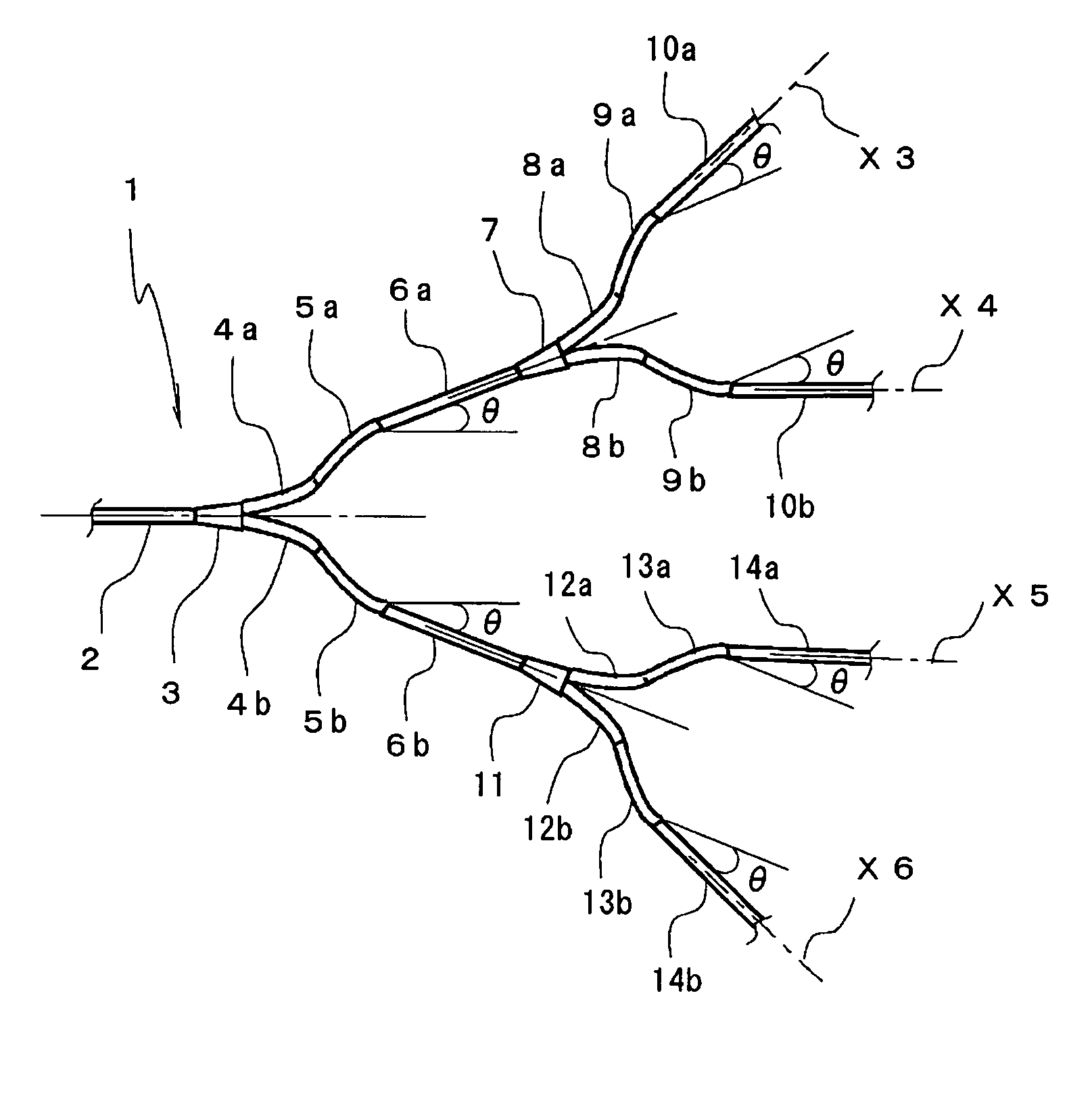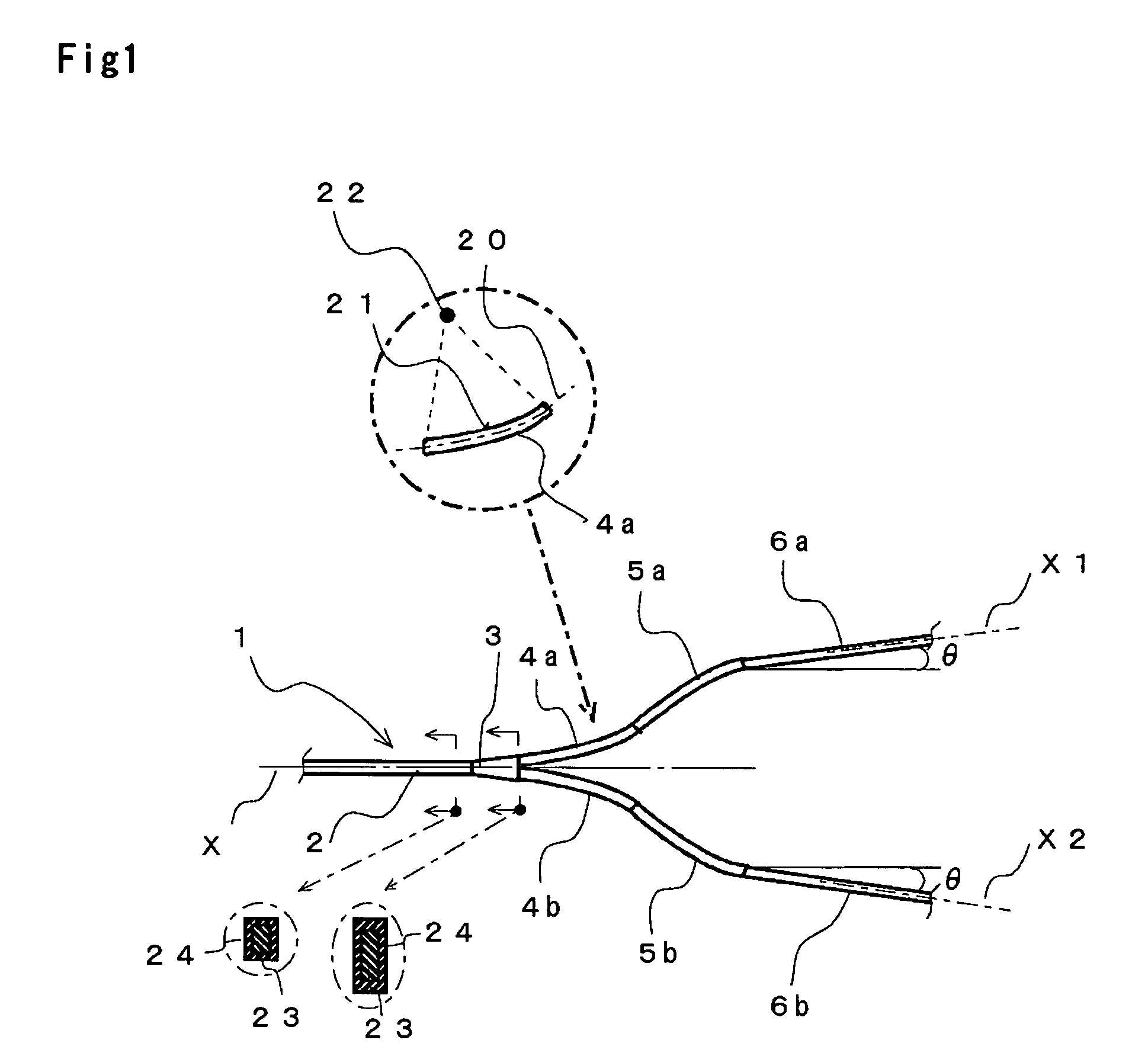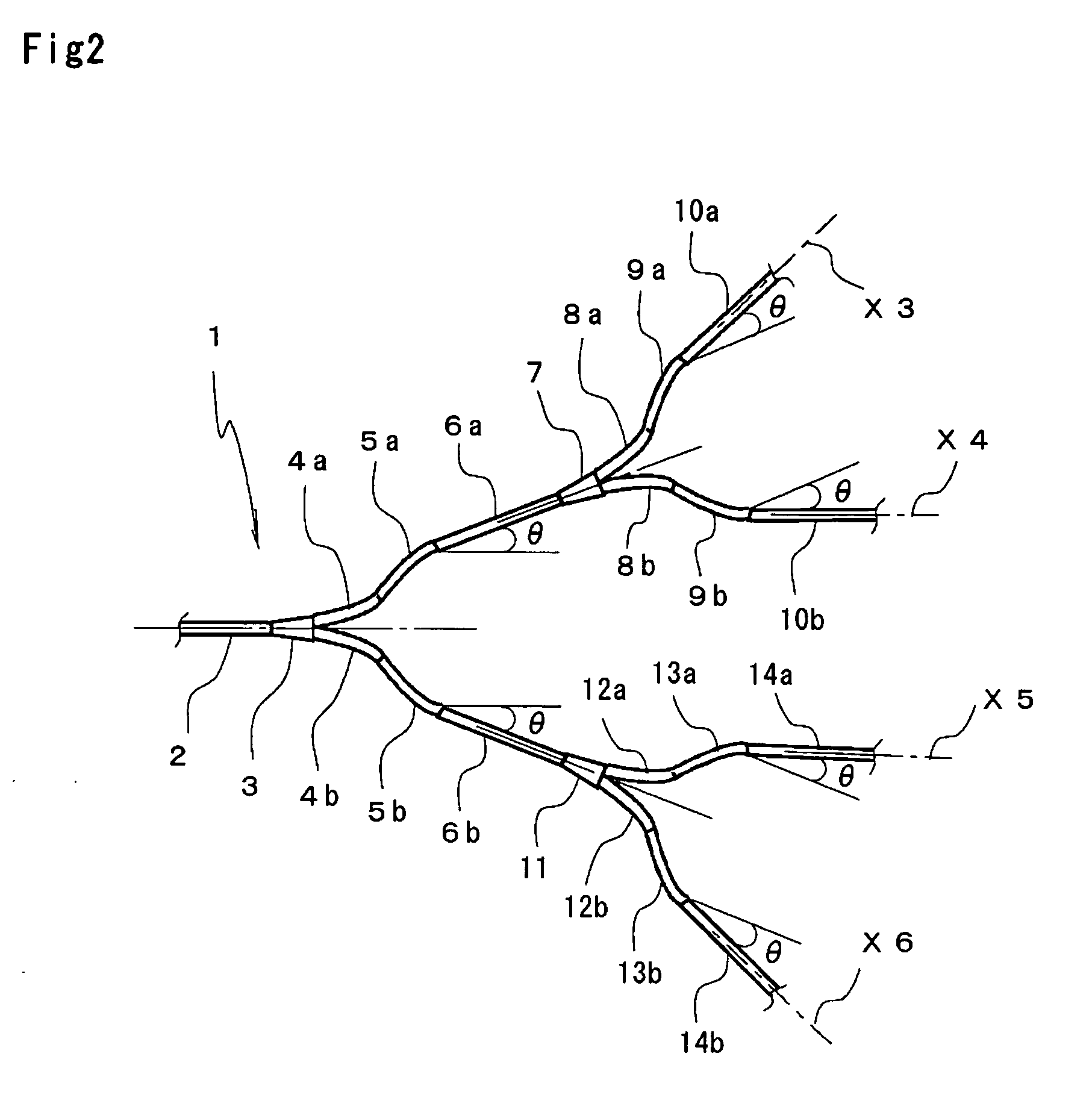Branch optical wave-guide
a technology of optical waveguides and beams, applied in the direction of optical waveguide light guides, optical light guides, instruments, etc., can solve the problems of undesirable excessive length of waveguides as a whole, inability to consider entire lengths, and undesirable excessive length of thus configured waveguides
- Summary
- Abstract
- Description
- Claims
- Application Information
AI Technical Summary
Benefits of technology
Problems solved by technology
Method used
Image
Examples
first embodiment
[0031] [First Embodiment]
[0032]FIG. 1 shows an embodiment of the branch optical wave-guide according to the present invention.
[0033] As shown in FIG. 1, a branch optical wave-guide 1 of the embodiment has a first linear wave-guide 2 for receiving light, and a tapered branch path 3 that is coupled to the first linear wave-guide 2 and splits light. There is shown an enlarged cross-sectional view of the first linear wave-guide 2 in a left side chain-line circle at the lower left of FIG. 1. The first linear wave-guide 2 has a core 23 and a clad 24. Light is transmitted through the core 23. There is shown an enlarged cross-sectional view of the right end of the tapered branch path 3 in a right side chain-line circle at the lower left of FIG. 1. The tapered branch path 3 is tapered to enlarge the cross-section area of the core 23, so as to split light transmitted through the first linear wave-guide 2. In this embodiment, light is received at the left end of the first linear wave-guide 2 ...
second embodiment
[0039] [Second Embodiment]
[0040]FIG. 2 shows another embodiment of the branch optical wave-guide according to the present invention. In FIG. 2, parts or components similar to those shown in FIG. 1 are indicated with the same reference numerals.
[0041] The branch optical wave-guide shown in FIG. 2 is of 1×4 type. The second linear wave-guide 6a of the branch optical wave-guide 1 shown in FIG. 1 has its end coupled to a second tapered branch path 7. The second tapered branch path 7 has its end coupled to third curved wave-guides 8a, 8b, and then fourth curved wave-guides 9a, 9b in this order, respectively. Furthermore, the fourth curved wave-guides 9a, 9b have their ends coupled to third linear wave-guides 10a, 10b, respectively. On the other hand, the second linear wave-guide 6b has its end coupled to a second tapered branch path 11. The second tapered branch path 11 has its end coupled to third curved wave-guides 12a, 12b, and then fourth curved wave-guides 13a, 13b in this order, r...
third embodiment
[0043] [Third Embodiment]
[0044]FIG. 3 shows an explanatory diagram for explaining the method of combining the branch optical wave-guides.
[0045] In FIG. 3, branch optical wave-guide paths 1a, 1b, 1c are of the same configuration as the branch optical wave-guide 1 as described above with reference to FIG. 1. For example, when the second linear wave-guide 6b directly coupled to the second curved wave-guide 5b of the branch optical wave-guide 1a is put together and coupled to the first linear wave-guide 2 directly coupled to the tapered branch path 3 of the branch optical wave-guide 1b, a triple branch optical wave-guide is formed. Furthermore, the first linear waveguide 2 of the branch optical wave-guide 1c may be coupled to the second linear wave-guide 6a of the branch optical wave-guide 1b. To reduce the size of thus completed branch optical wave-guide, when coupling the branch optical wave-guide 1a and the branch optical wave-guide 1b, it is desired that the second linear wave-guid...
PUM
 Login to View More
Login to View More Abstract
Description
Claims
Application Information
 Login to View More
Login to View More - R&D
- Intellectual Property
- Life Sciences
- Materials
- Tech Scout
- Unparalleled Data Quality
- Higher Quality Content
- 60% Fewer Hallucinations
Browse by: Latest US Patents, China's latest patents, Technical Efficacy Thesaurus, Application Domain, Technology Topic, Popular Technical Reports.
© 2025 PatSnap. All rights reserved.Legal|Privacy policy|Modern Slavery Act Transparency Statement|Sitemap|About US| Contact US: help@patsnap.com



